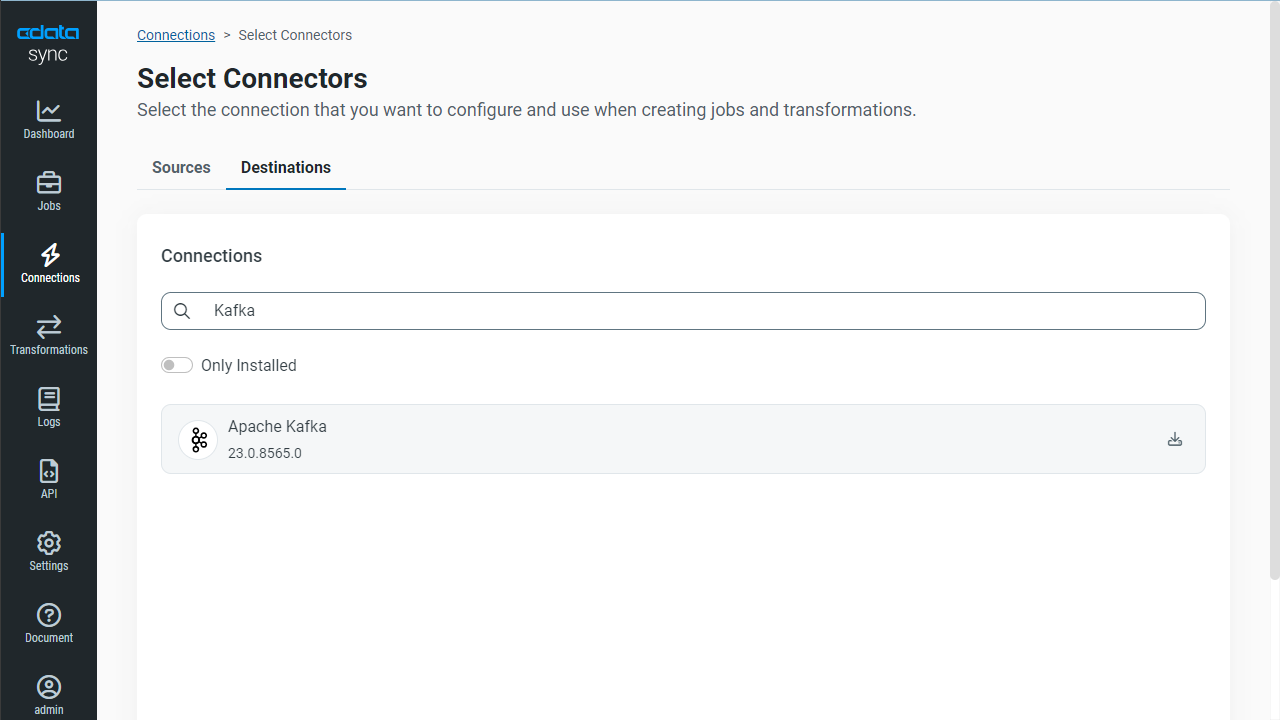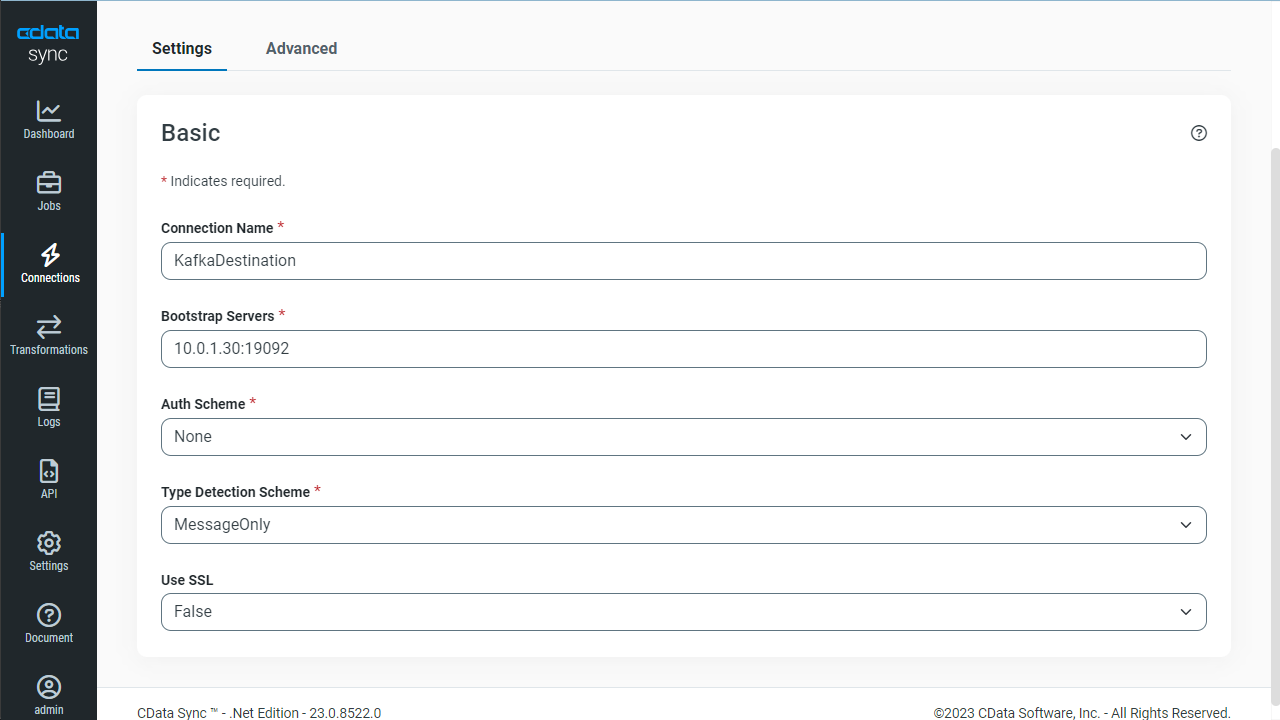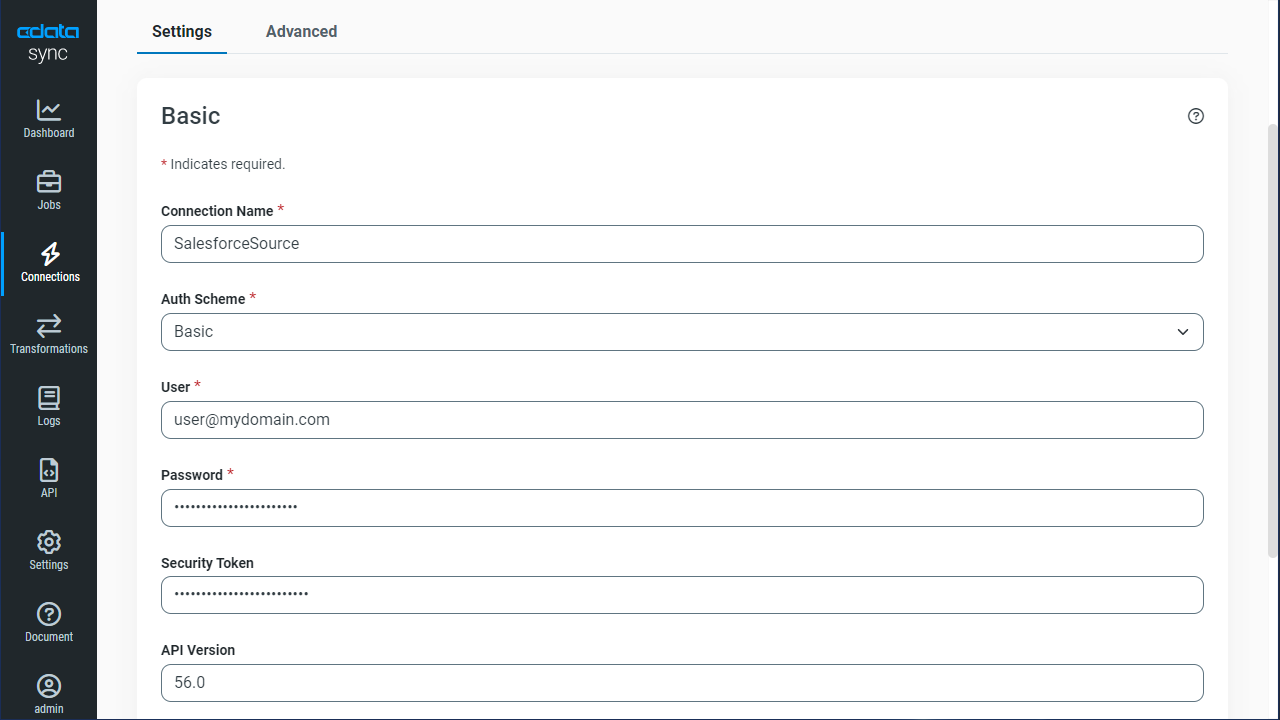Model Context Protocol (MCP) finally gives AI models a way to access the business data needed to make them really useful at work. CData MCP Servers have the depth and performance to make sure AI has access to all of the answers.
Try them now for free →Automated Continuous Odoo Replication to Apache Kafka
Use CData Sync for automated, continuous, customizable Odoo replication to Apache Kafka.
Always-on applications rely on automatic failover capabilities and real-time data access. CData Sync integrates live Odoo data into your Apache Kafka instance, allowing you to consolidate all of your data into a single location for archiving, reporting, analytics, machine learning, artificial intelligence and more.
About Odoo Data Integration
Accessing and integrating live data from Odoo has never been easier with CData. Customers rely on CData connectivity to:
- Access live data from both Odoo API 8.0+ and Odoo.sh Cloud ERP.
-
Extend the native Odoo features with intelligent handling of many-to-one, one-to-many, and many-to-many data properties. CData's connectivity solutions also intelligently handle complex data properties within Odoo. In addition to columns with simple values like text and dates, there are also columns that contain multiple values on each row. The driver decodes these kinds of values differently, depending upon the type of column the value comes from:
- Many-to-one columns are references to a single row within another model. Within CData solutions, many-to-one columns are represented as integers, whose value is the ID to which they refer in the other model.
- Many-to-many columns are references to many rows within another model. Within CData solutions, many-to-many columns are represented as text containing a comma-separated list of integers. Each value in that list is the ID of a row that is being referenced.
- One-to-many columns are references to many rows within another model - they are similar to many-to-many columns (comma-separated lists of integers), except that each row in the referenced model must belong to only one in the main model.
- Use SQL stored procedures to call server-side RFCs within Odoo.
Users frequently integrate Odoo with analytics tools such as Power BI and Qlik Sense, and leverage our tools to replicate Odoo data to databases or data warehouses.
Getting Started
Configure Apache Kafka as a Replication Destination
Using CData Sync, you can replicate Odoo data to Kafka. To add a replication destination, navigate to the Connections tab.
- Click Add Connection.
- Select Apache Kafka as a destination.
![Configure a Destination connection to Kafka.]()
- Enter the necessary connection properties:
- Bootstrap Servers - Enter the address of the Apache Kafka Bootstrap servers to which you want to connect.
- Auth Scheme - Select the authentication scheme. Plain is the default setting. For this setting, specify your login credentials:
- User - Enter the username that you use to authenticate to Apache Kafka.
- Password - Enter the password that you use to authenticate to Apache Kafka.
- Type Detection Scheme - Specify the detection-scheme type (None, RowScan, SchemaRegistry, or MessageOnly) that you want to use. The default type is None.
- Use SSL - Specify whether you want to use the Secure Sockets Layer (SSL) protocol. The default value is False.
- Click Test Connection to ensure that the connection is configured properly.
![Configure a Destination connection.]()
- Click Save Changes.
Configure the Odoo Connection
You can configure a connection to Odoo from the Connections tab. To add a connection to your Odoo account, navigate to the Connections tab.
- Click Add Connection.
- Select a source (Odoo).
- Configure the connection properties.
To connect, set the Url to a valid Odoo site, User and Password to the connection details of the user you are connecting with, and Database to the Odoo database.
![Configure a Source connection (Salesforce is shown).]()
- Click Connect to ensure that the connection is configured properly.
- Click Save Changes.
Configure Replication Queries
CData Sync enables you to control replication with a point-and-click interface and with SQL queries. For each replication you wish to configure, navigate to the Jobs tab and click Add Job. Select the Source and Destination for your replication.
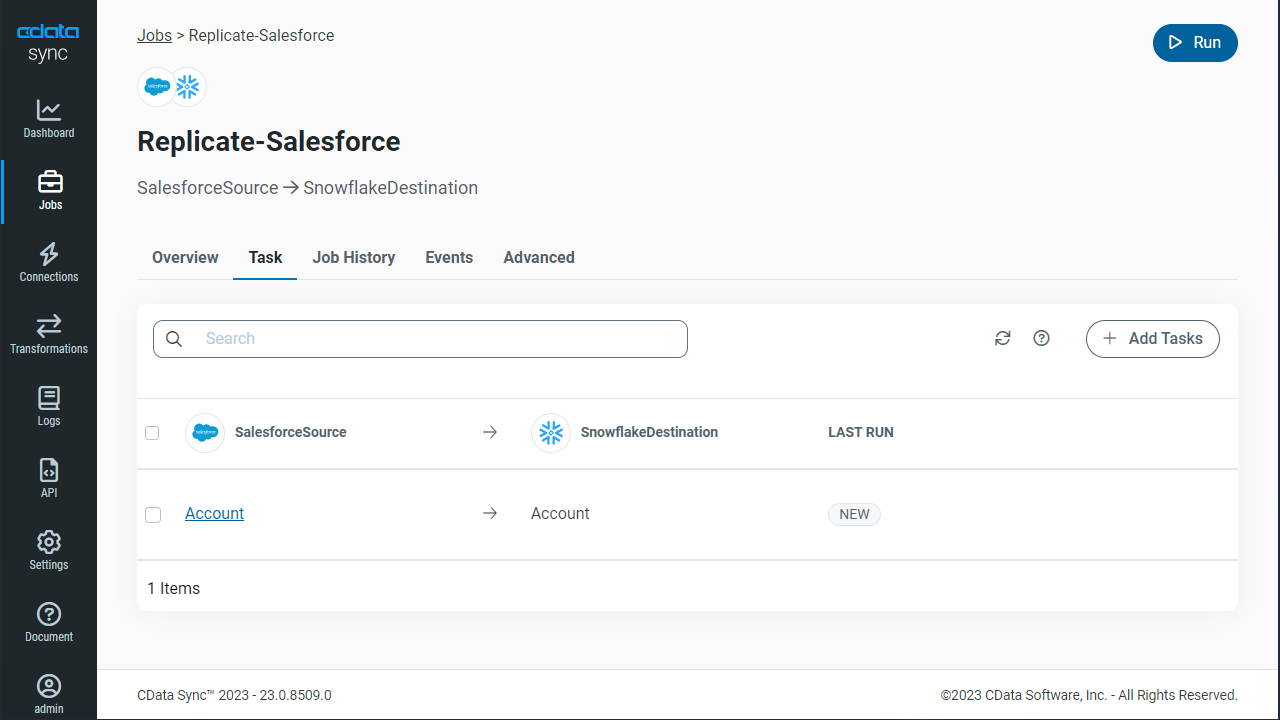
Replicate Entire Tables
To replicate an entire table, click Add Tables in the Tables section, choose the table(s) you wish to replicate, and click Add Selected Tables.
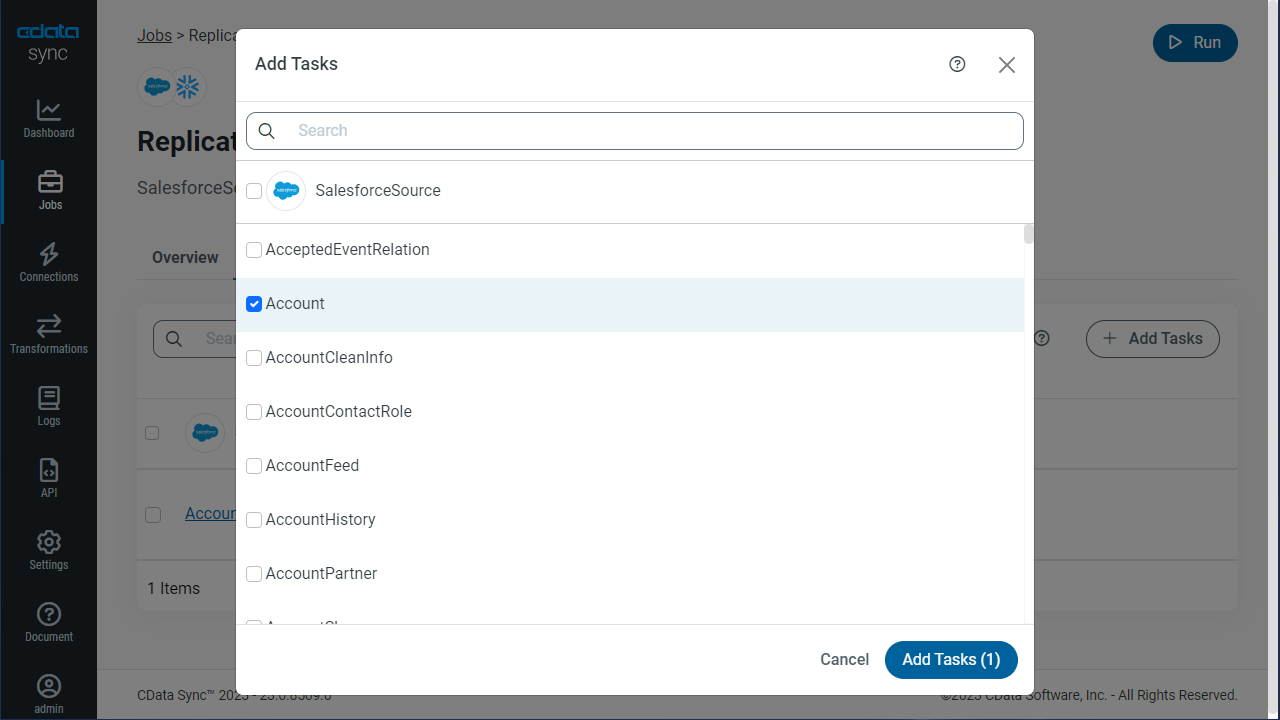
Customize Your Replication
You can use the Columns and Query tabs of a task to customize your replication. The Columns tab allows you to specify which columns to replicate, rename the columns at the destination, and even perform operations on the source data before replicating. The Query tab allows you to add filters, grouping, and sorting to the replication.
Schedule Your Replication
In the Schedule section, you can schedule a job to run automatically, configuring the job to run after specified intervals ranging from once every 10 minutes to once every month.
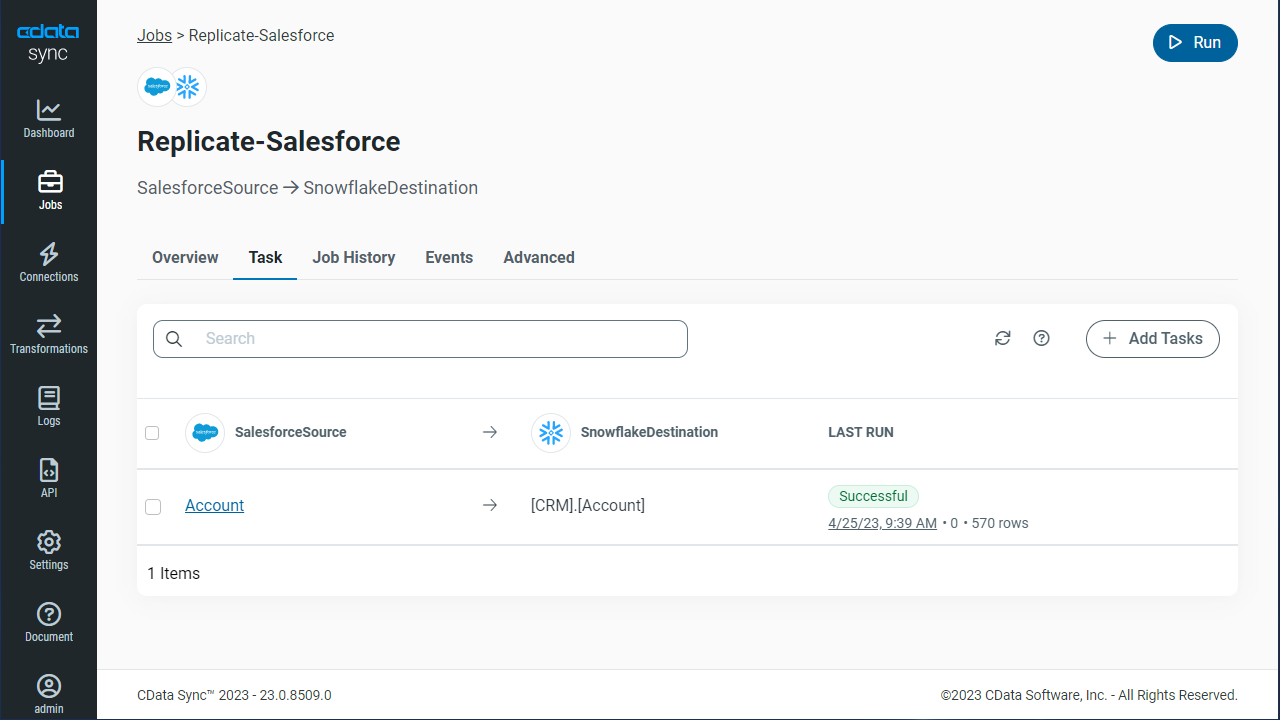
Once you have configured the replication job, click Save Changes. You can configure any number of jobs to manage the replication of your Odoo data to Kafka.

